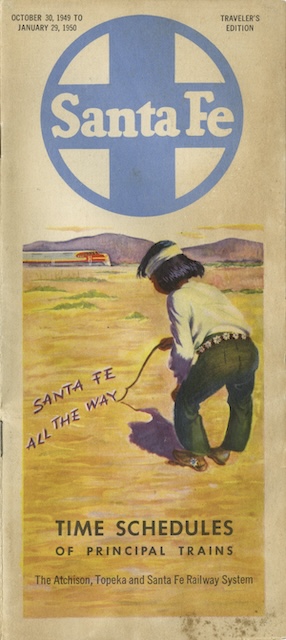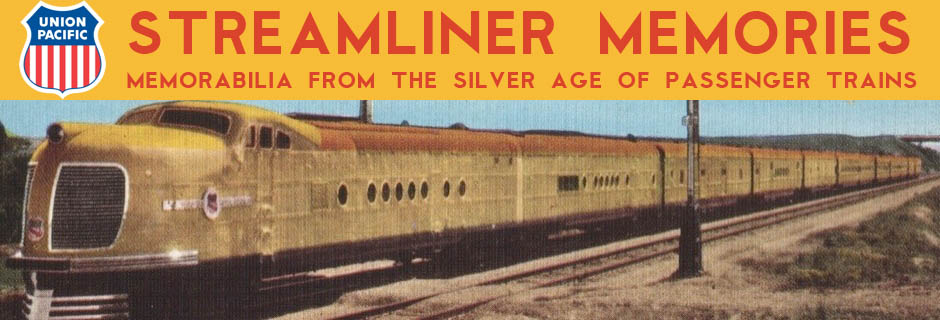From 1948 to 1961, the Santa Fe labeled its full system timetables as the “Ticket Agent Edition” while it published a condensed timetable labeled “Traveler’s Edition.” The ticket agent editions were useful for comparing schedules side-by-side to see whether someone should take the Super Chief, El Capitan, Chief or another Santa Fe train. The traveler’s editions were useful for pinpointing where a train someone was riding was currently located (or supposed to be located), since each train was printed on a separate page or two.
 Click image to download a 9.3-MB PDF of this 28-page timetable.
Click image to download a 9.3-MB PDF of this 28-page timetable.
We’ve previously seen several traveler’s edition timetables, including one from July 1949. This one is from three months later. The differences between the two are pretty slight.
One curiosity from these timetables is what happened to the Scout, Santa Fe’s budget heavyweight train. As I’ve noted before, the train was inaugurated in January, 1916, cancelled in 1931, then revived in 1936 as Santa Fe’s answer to Union Pacific’s Challenger. Although nowhere near as prestigious as the Chief, it was assigned train numbers 1 and 2 (although in some years was 1 & 10), but (my previous report notes) was cancelled again in 1948.
Despite that previous report, the Scout appears in this 1949 timetable. However, it no longer has the numbers 1 & 2. Instead, it is listed as 5-105 westbound and 6-106 eastbound. Moreover, the train only goes as far west as Albuquerque.
Usually, when a timetable gives a hyphenated number for a train, it means two or more different trains with through cars. In this case, trains 5 & 6 went between Chicago to Fort Worth. At Newton Kansas, the Albuquerque cars were split off and headed west as train 105, returning as 106. Although Santa Fe didn’t see a need for naming the Fort Worth train, it assigned the name Scout to the Albuquerque section. This arrangement continued at least through 1950.
